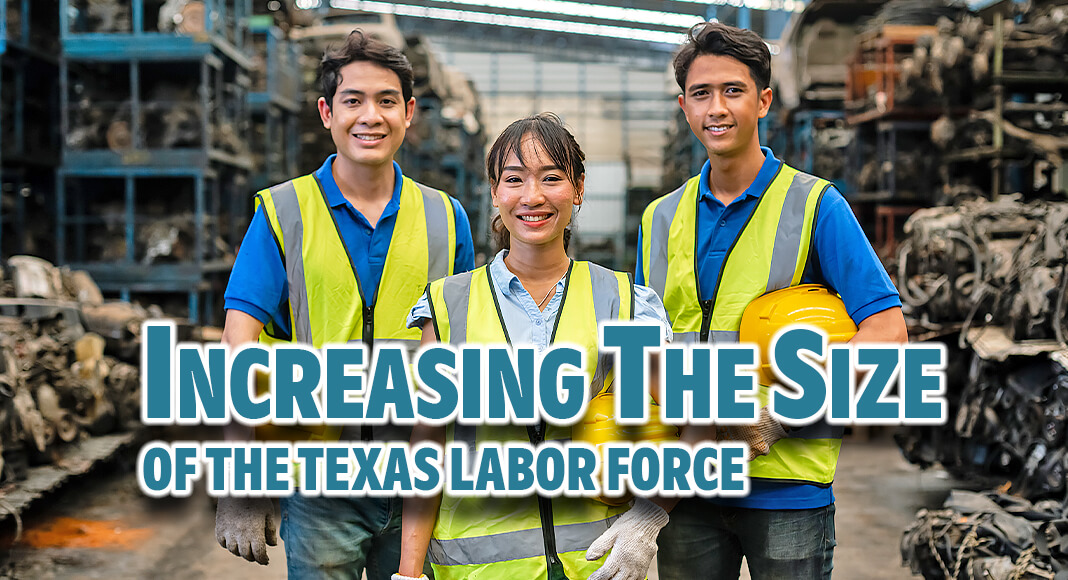
Texas Border Business
The Texas economy has been on a strong growth trajectory. About 1.1 million of the 4.5 million net jobs the United States has gained since just prior to the pandemic (February 2020) have been in Texas. Looking ahead, our analysis indicates that this dynamic state economy is likely to continue to outperform the nation. Let’s take a brief look at key drivers of expansion over the next few decades.
The fact that the Texas population is notably younger than the national average enhances future prospects for increasing the size of the labor force, the single most important factor in sustainable economic development. A challenge will be ensuring the workforce is prepared for the jobs of the future. As I’ve mentioned before, literacy rates are currently lower than national averages, and Texas public schools have the highest proportion of English Learners of any state. Education and training opportunities beyond high school will also be critical, as will affordability given underlying demographic patterns.
Energy has been an important part of the Texas economy for more than a century and will continue to be a key export industry as the need for conventional fuels is projected to persist for decades. In addition to vast deposits of oil and natural gas, the state has more recently become a leader in renewable energy (primarily wind and solar) and emerging areas such as hydrogen and carbon capture.
Texas is seeing a surge in technology investments as firms engage in “onshoring” to provide more supply chain resiliency. The state is also increasing its prominence in biosciences, and several recent initiatives have the potential to greatly enhance the state’s presence in segments ranging from research to pharmaceuticals to related manufacturing. The selection of Texas as a site for the Advanced Research Projects Agency for Health (ARPA-H) is an enormous catalyst.
The Texas economy is projected to expand at a pace notably faster than the nation over the long-term forecast horizon (through 2050). Almost 6.7 million jobs are likely to be added, with the largest numbers of new jobs in the professional and business services and health and social services industry groups. All major segments of the economy are projected to add jobs over the period.
Some of the factors affecting the long-term economic outlook are obviously unforeseeable at this time (three decades ago, we didn’t know about smartphones, 9/11, COVID-19, Taylor Swift, or Barbenheimer). Texas is well positioned to deal with challenges (and there are many) and capitalize on opportunities and remain a growth leader in the years ahead. The combination of a diverse mix of high-impact sectors, a young and expanding population, and a favorable cost environment position Texas well for ongoing success. Stay safe!
___________________________________________
Dr. M. Ray Perryman is President and Chief Executive Officer of The Perryman Group (www.perrymangroup.com), which has served the needs of over 3,000 clients over the past four decades.















